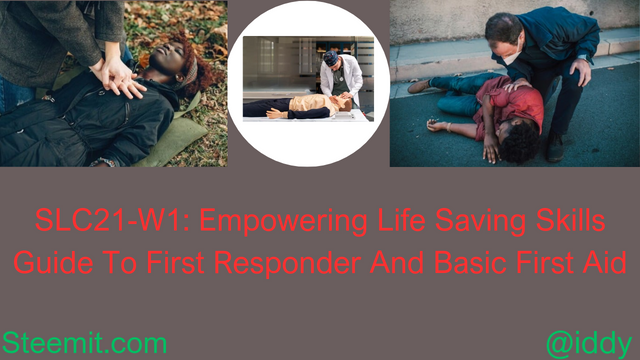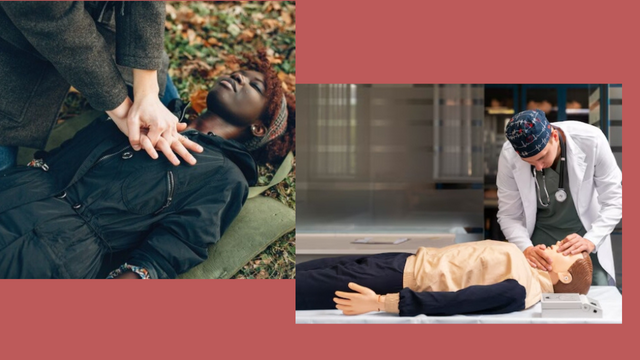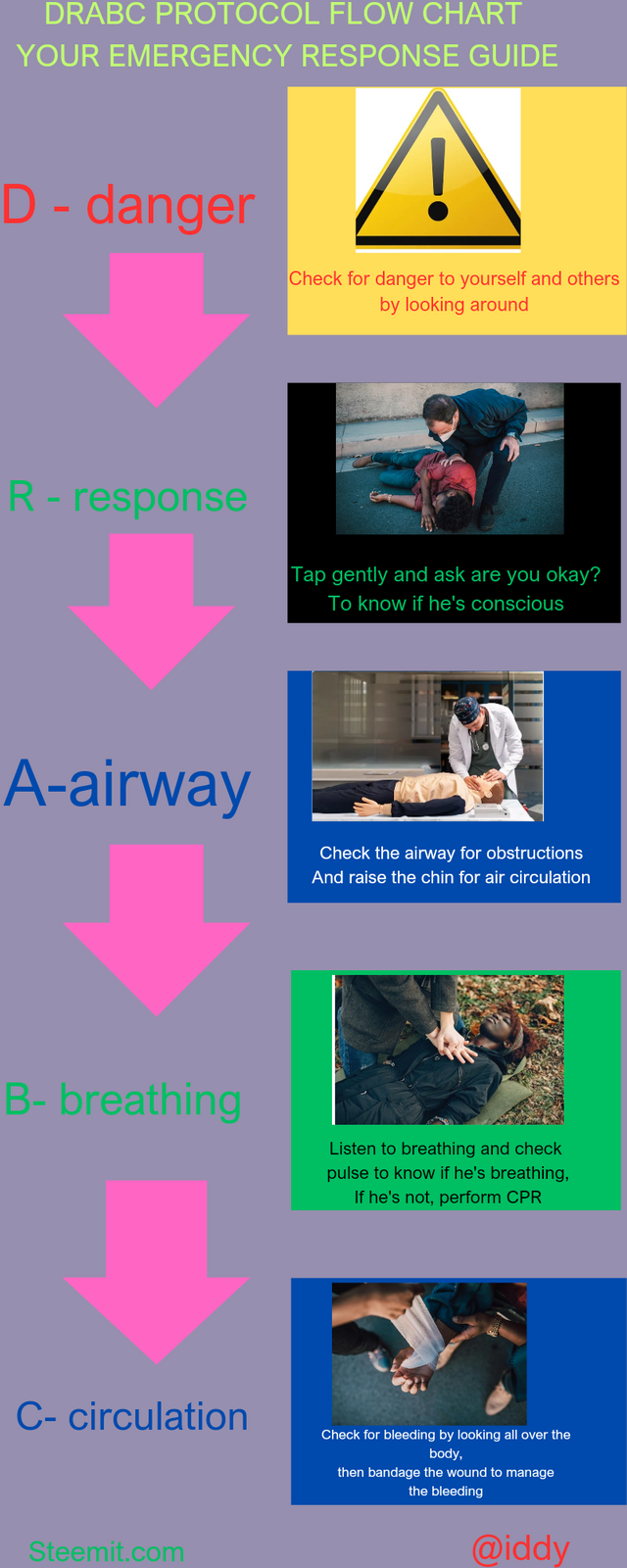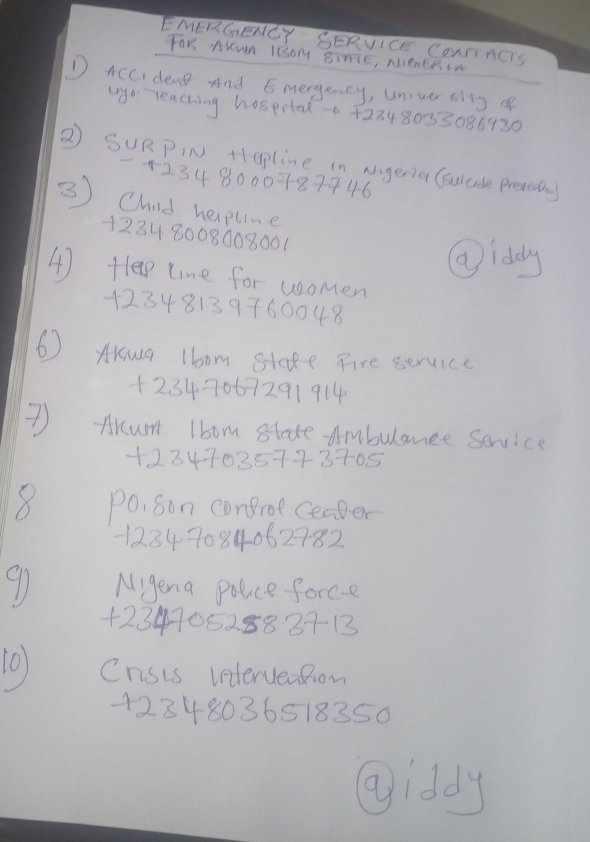
Created with Canva
I am thrilled to participate in this course, which majorly has to do with life-saving techniques one should possess as a first responder or aider. In this post, I am performing the homework Tasks.
Share any experience of your life in which you faced an emergency that could be handled on your own only if you know the basic first response skills.
On 30th of March 2024, the incident I can't forget so easily happened. I am a transporter, and I am affiliated with a Local Government Area transportation company. I went to work on that day, and all the transporters were just gathering and making jokes for fun; "Besky," A fellow transporter, was among us who had not called for a ride yet because that day was a dull business day.
At about 11 AM, I, Besky, and five other transporters went and stayed under the tree in the company's premises for shade. We continue with our discussion and make jokes to laugh out a bad business day. All of a sudden, Besky fell to the ground and held his chest; I rushed to him, held him, and called out Besky, Besky! He didn't respond, and other transporters who were there looked up to me because I was the most educated person in their mix. They asked, 'Idongesit, what should we do?' and the first statement that came to my mind was, Let's rush him to the hospital. We rushed Besky to the nearest hospital; when we got there, the medical personnel immediately attended to him, but sadly, before they could even give him the needed attention, he Died, he died of a heart attack. I can't forget this day easily; I could have done something differently to save him; I didn't know anything; I was just confused, and the best thing I could think of was to take him to the hospital.
After noticing he didn't respond to my calling, I should have paid attention to him by looking at where he held to detect what he suffered from. In this case, Besky held his chest, which indicated he suffered from a heart attack.
Ask those who were with me to call the emergency responders
I should have raised his neck to prevent airway blockage
I should have performed CPR on Becky by compressing his chest at about 6cm long and at a rate of at least 100 per minute, then at the same time, provided artificial ventilation by placing my mouth to his mouth and blowing air into his.
I should have finally calmed the casualty and my fellow transporters
If I had followed the above steps, maybe I would have saved Besky

Created with Canva
Imagine you are walking back home, when you witness a road traffic accident between a car and a motorcycle, and the motorcyclist is lying on the road, not moving. There’s some bleeding from his leg, and he appears to be unconscious. You being the first responder, how will you manage this scenario?
If I find myself in this kind of scenario, I would perform the DRABC Method.
- (1) I would stand and, first of all,, check for danger. I will Look and see if the scene is safe for me and the victim to avoid further casualties. Practically, I will look for ongoing traffic and clear the road of things that can injure me.
Step 1 is very important because if this step is not taken, I may injure myself or get into an accident which may cause further casualties
- (2) I would walk to the motorcyclist, tap him gently, and ask if he is okay. I would further check for signs of consciousness, like his response to my question, and his body movements in his legs and hands.
This is essential because it enables me to know the help to render and know if he's conscious
- (3) If he is unconscious, I would carefully check for his airway by raising his chin upward(tilt his head) to allow air passage, then look for obstructions.
This step enables me to keep the casualty alive till professionals arrive. Very important
- (4) The next thing I will do is check the breathing of the motorcyclist by holding his wrist to feel his pulse for about 15 seconds. If he is not breathing, or he is battling to breathe, I would prepare my mind for CPR.
This step helps me to ascertain if I should perform CPR on him
- (5) I would next look for circulation, that is looking for bleeding. In this case, the victim is bleeding on the leg, so I would bandage the wound with clean clothes to stop the bleeding and raise his limb to maintain the pressure.
This step is essential because if I don't manage the bleeding, the victim may die. Therefore bandaging the wound would help sustain the life of the victim
- (6) I would call for help while managing the situation by asking someone to call for an ambulance ( emergency responders). I will speak to the responders myself and give them the details of the accident and its location; this would enable come up with the necessary things they would need.
This step is essential because it would enlighten the professional emergency responders on what to do, and the medical equipment and drugs they should take alongside them
- (7) I would continue to monitor the man( motorcyclist) by continuously checking his breathing and giving him CPR till professional emergency responders arrived.
This step would help me ascertain if his situation is becoming worse
- (8) When the emergency responders in my Locality arrived, I would give detailed information they needed to know about the man so they could know where to start. Information, details of the accident, and the condition of the man (motorcyclist).
This step would enable the responders to know the next step to take to save his life
I believe following the above DRABC procedure would help in the situation.
Draw or Create an engaging illustration/flowchart of the DRABC protocol (Try to be creative and don't forget to add your username on the illustration)

Created with Canva
From the above flow chart, I have described the steps to be taken by a first responder using a DRABC protocol. I also use picture descriptions and write notes under each picture that describe each step.
Write down the numbers of emergency services in your country/area on a piece of paper (Minimum 5, maximum 10)
A first responder or aider needs to be acquainted with the emergency lines in his locality. My Locality is Akwa Ibom state Nigeria, and I have listed the emergency line in the picture below, lines for suicide prevention, child help, helpline for women, fire service, ambulance service, poison control and police, etc.

I invite;
@blessedbee
@daprado1999
@radleking
Student Name: @iddy
Time of Checking: Within 24 hours of the homework
Overall Grade: [8.6/10]
Plagiarism Check: Pass
AI Use: No
General Feedback:
Overall, your submission reflects a solid understanding of first aid and emergency response protocols, with thoughtful application and explanations. A few extra details, such as specific assessments in the DRABC protocol and including additional helplines, could add further depth. Great work—keep building on these emergency response skills!
Regards,
@abdu.navi03
Downvoting a post can decrease pending rewards and make it less visible. Common reasons:
Submit
Thank you very much, @abdu.navi03, for the the review.
Downvoting a post can decrease pending rewards and make it less visible. Common reasons:
Submit
Upvoted! Thank you for supporting witness @jswit.
Downvoting a post can decrease pending rewards and make it less visible. Common reasons:
Submit